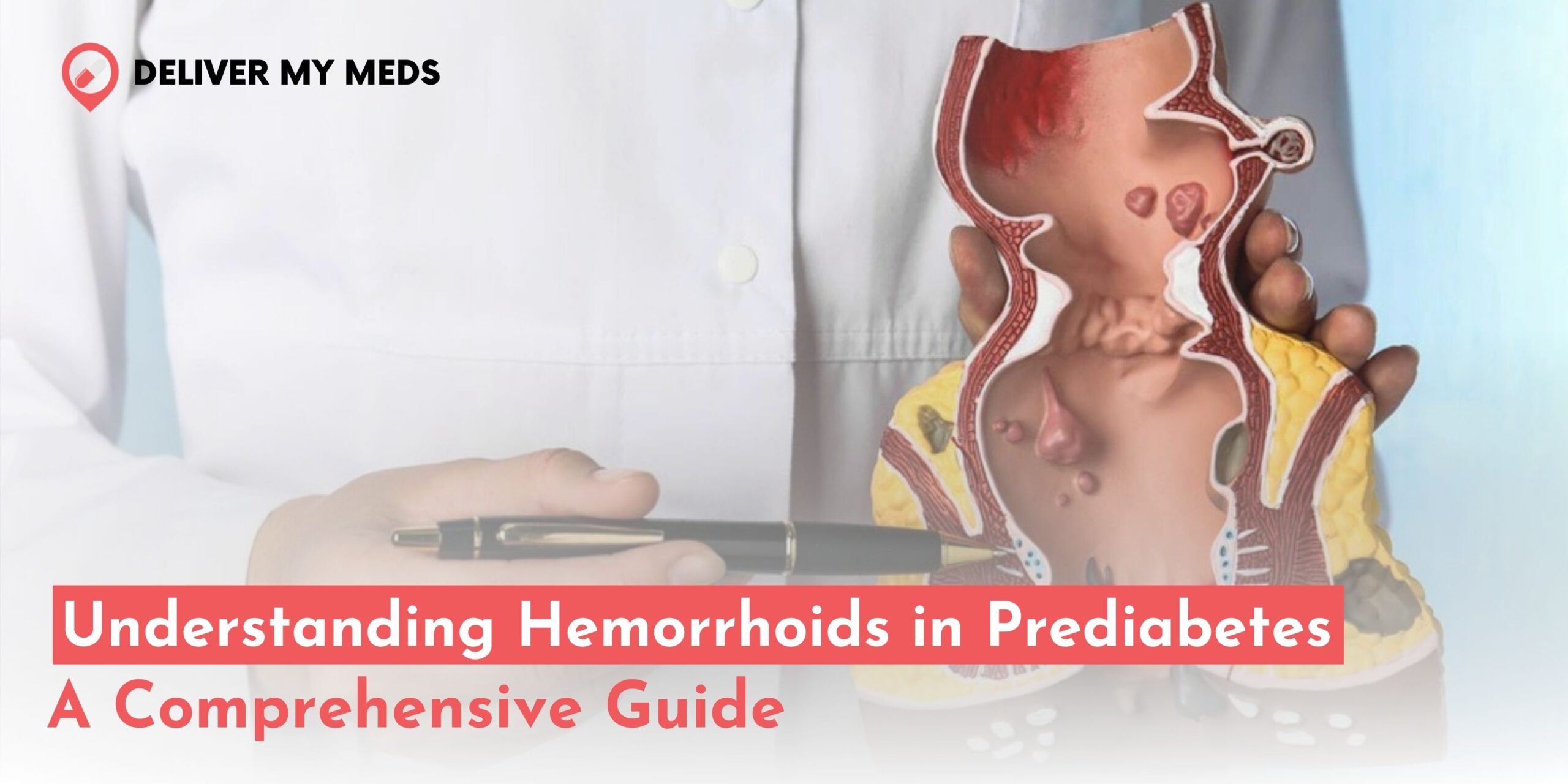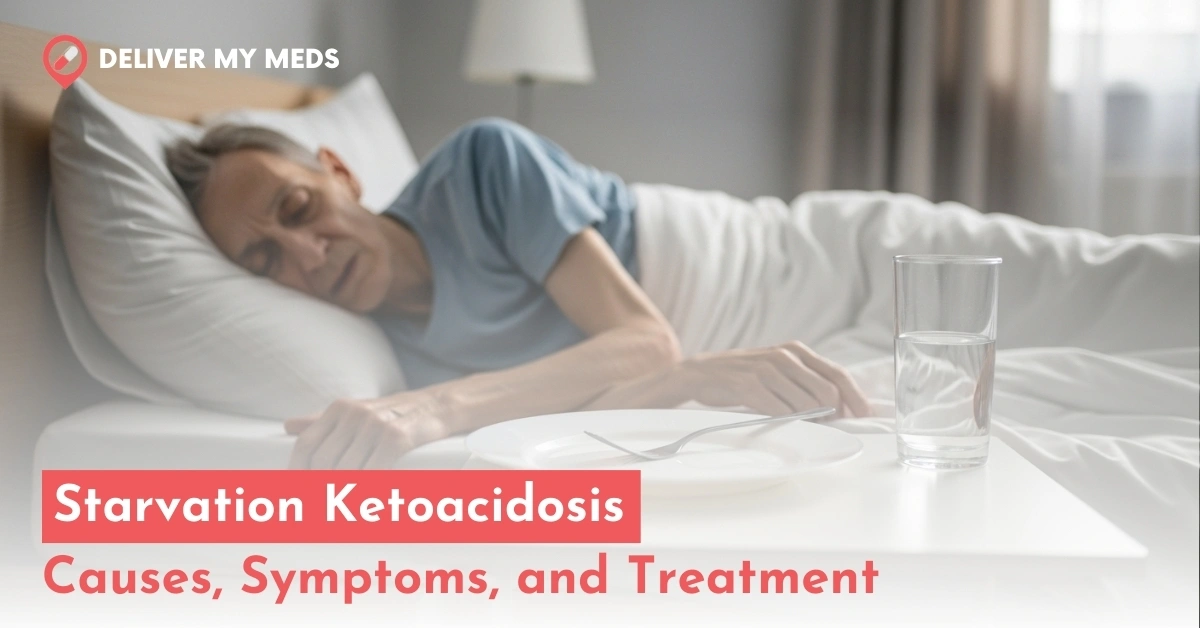
Though at first glance, they seem to be two different medical disorders, hemorrhoids, and prediabetes have more in common than first appears. Persons coping with prediabetes may be at an increased risk of acquiring hemorrhoids. In this blog, we shall investigate the hemorrhoids in prediabetes, the link between these two health issues, their possible interactions, and how you might control or avoid both.
What are hemorrhoids?
Hemorrhoids are swollen blood vessels either inside or around the anus and lower rectum. These might be internal (inside the rectum) or external (under the skin around the anus). Hemorrhoids are Commonly affecting many people at some point in their life.
Usually seen as bright red blood on toilet paper, the most common symptoms of hemorrhoids are
- Pain or discomfort around the anus, especially when seated or during bowel movements
- Bleeding during bowel movements, usually seen as bright red blood on toilet paper
- Itching or irritation in the anal area
- swelling or a lump near the anus
Among the several causes of hemorrhoids are pregnancy, a sedentary lifestyle, obesity, straining during bowel motions, and persistent constipation.
What is prediabetes?
Blood sugar levels in prediabetes are a disorder whereby they are higher than usual but not yet sufficient to be classified as type 2 diabetes. It frequently acts as a warning sign indicating you are at risk of type 2 diabetes development. The disorder, sometimes referred to as insulin resistance, is when the body inefficiently uses insulin, raising blood sugar levels.
Monitoring blood sugar levels is especially crucial if you have risk factors like:
- Being overweight or obese
- A sedentary lifestyle
- A family history of diabetes
- High blood pressure or high cholesterol
- Older age
Unchecked prediabetes can develop into type 2 diabetes, which carries more serious risks, including kidney disease, nerve damage, and cardiovascular disease.
How Hemorrhoids and Prediabetes Are Connected
Hemorrhoids and prediabetes first seem to have not much in common. However, there are a few overlapping risk factors and lifestyle choices that can contribute to the development of both conditions.
-
Obesity and Overweight
Obesity is one of the main risk factors for prediabetes and hemorrhoids alike. Extra weight can put pressure on the veins in the rectum, increasing the probability of hemorrhoid development. Likewise, being overweight, particularly around the abdomen, can cause insulin resistance, and obesity is a major risk factor for prediabetes.
-
Poor Diet
Both disorders depend much on diet. A diet heavy in processed foods, refined sugars, and bad fats can lead to obesity and increase prediabetes risk. Furthermore, a low-fiber diet can cause constipation, which raises the risk of hemorrhoids. By helping feces to soften and pass more easily, fiber lessens the tension in the rectal area.
-
Insufficient Physical Exercise
A lazy lifestyle is a common cause of both prediabetes and hemorrhoids. Physical activity boosts digestion, increases insulin sensitivity, and helps to preserve a normal weight. Lack of activity can cause poor circulation and weight gain, raising a hemorrhoid risk.
-
Higher Inflammation
Those with prediabetes often have chronic inflammation, which can potentially contribute to the onset of hemorrhoids. Inflammation in the body can exacerbate both conditions by contributing to vascular problems (e.g., swollen blood vessels in the rectum) and impairing the body’s ability to regulate blood sugar levels.
Managing Hemorrhoids and Prediabetes Together
Managing hemorrhoids and prediabetes simultaneously calls for a comprehensive strategy aiming at both disorders. These actions help you to increase your health and lower the possibility of problems from both diseases:
-
Follow a high-fiber diet
A diet high in fiber can prevent constipation and lessen the strain on your rectal area, thereby preventing or relieving hemorrhoids. Control of blood sugar levels is also absolutely vital. Emphasize whole grains, fruits, vegetables, and legumes since they offer insoluble and soluble fiber to keep your digestive system moving smoothly.
-
Work Regularly
Regular physical activity increases insulin sensitivity, helps control weight, and boosts good circulation. Walking, swimming, and cycling are Excellent choices that help lower the risk of hemorrhoids and ease rectal pressure. You should aim for at least thirty minutes of moderate exercise most days of the week.
-
Maintain a Healthy Weight
Reducing the weight you carry will help the blood vessels surrounding your anus release pressure and minimize your hemorrhoid risk. It also can stop prediabetes from developing into type 2 diabetes. Managing both illnesses mostly depends on working with a healthcare expert to create reasonable weight loss targets.
-
Avoid Straining During Bowel Movements
Straining during bowel movements can cause and worsen hemorrhoids. If you experience constipation, avoid sitting on the toilet for long periods or forcing bowel movements. To help maintain stools that are soft and simple to pass, try eating extra fiber and drinking lots of water. Under the advice of a healthcare expert, consider using a modest laxative or a stool softener if needed.
-
Monitor Blood Sugar Levels
If you have prediabetes, maintaining track of your blood sugar levels with CGM Devices is vital for preventing the formation of type 2 diabetes. Along with lifestyle modifications, including diet and exercise, regular testing helps control your blood sugar. See your doctor to design a strategy fit for you.
-
Consider Medical Treatment When Necessary
In some cases, both hemorrhoids and prediabetes may require medical treatment. For hemorrhoids, this could include over-the-counter creams, suppositories, or, in severe cases, surgical procedures. For prediabetes, medication might be prescribed to help manage blood sugar levels, alongside lifestyle changes.
When to seek Professional Help
Although lifestyle changes help both prediabetes and hemorrhoids to be treatable, it is advisable to visit a doctor if:
- Hemorrhoid symptoms persist even with home remedies
- You have major rectal bleeding
- You find it difficult to control blood sugar levels, or you have symptoms including frequent urination, extreme thirst, or tiredness.
Conclusion
Though they seem to be independent medical issues, hemorrhoids, and prediabetes have common risk factors, including obesity, poor food, and a lazy lifestyle. Making wise lifestyle decisions such as eating a diet high in fiber, working out consistently, and keeping a good weight helps you control both diseases and lower your future risk of problems.
If you suffer from either or both of these diseases, see your healthcare practitioner to create a customized strategy. Acting now will enable you to lead a better, more comfortable life tomorrow.



